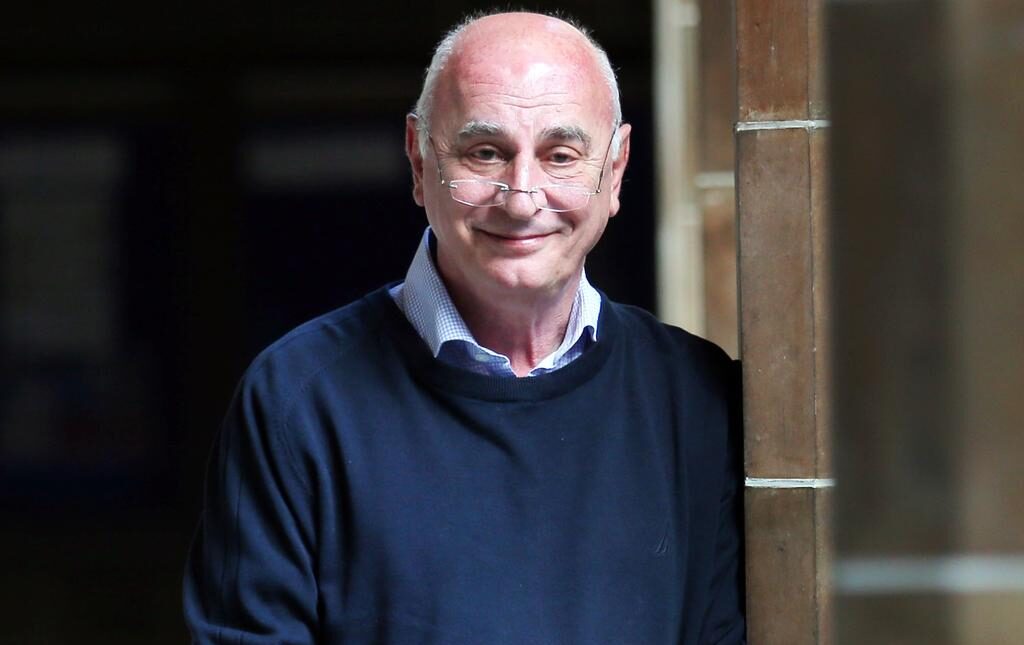
Posters of Qatar’s former and current emirs on display in January during a ceremony to mark the beginning of a Qatari-funded construction project in Khan Younis in the Gaza Strip. (Ibraheem Abu Mustafa/Reuters)
It might seem like a simple matter of checkbook diplomacy: wealthy Qatar promising the struggling Gaza Strip that it would pay the monthly salaries of nearly 24,000 civil servants.
Nothing involving Gaza, however, is uncomplicated.
Qatar’s pledge on Tuesday for a one-time payment of $31 million to cover the workers’ checks — in addition to other public works across Gaza — is just a slice of efforts by the tiny Persian Gulf state to brand itself as the region’s Mr. Fix-It by sponsoring development projects and trying to broker various peace pacts.
Gaza stands out, though. Any gesture of aid or outreach sets off strategic ripples in every direction across the region.
Front and center are the Palestinians themselves.
The divided Palestinians are moving toward municipal elections in October — the first in nearly a decade in which the Western-backed Palestinian Authority, which controls the West Bank, will run head-to-head against rival Hamas, which runs Gaza.
Another tranche of money and investment from energy-rich Qatar to Gaza is sure to sting Palestinian Authority President Mahmoud Abbas as his Fatah party frets over signs of rising support for Hamas. Abbas’s West Bank government doesn’t have a big-spender patron like Qatar. Hamas, too, has some swagger in the Muslim world for managing to limp along for years despite being cut off by an Israeli border blockade and being labeled a terrorist faction by the United States and others for attacks such as firing rockets into Israel.
The more Hamas boasts about the outside aid it receives, the more it could deepen the tensions with Abbas and his backers. Jamal Muhaisen, a member of the West Bank government’s central committee, said last month that the planned Qatari payments “represents aid from Qatar to Hamas rather than to the Palestinian people.”
Hamas, in turn, has raised preemptive alarms about feared crackdowns against its supporters in the West Bank before the election.
“It’s all about who will get the credit for more Qatari help,” said Patrick Clawson, director for research at the Washington Institute for Near East Policy. “One-month pay isn’t going to change the lives of workers in Gaza. Many haven’t been paid for years. But it’s all about the symbolism and what side can at least deliver something.”
Meanwhile, Israel has done some fancy footwork with regard to Gaza.
Israel would certainly applaud any attempts to keep Hamas from gaining strength. The two sides fought a three-week war in Gaza beginning in late 2008 and a seven-week war in 2014. Cross-border skirmishes persist.
Yet Israel also has cut some deals — including diplomatic fence-mending with Turkey — that offer potential long-term benefits for Gaza and, by extension, Hamas. The reason is Iran, which has been Hamas’s main ally for decades. Israel figures that opening the door to aid from Turkey and elsewhere could undercut Iran’s influence in Gaza and stave off deeper financial distress among Gazans.
Last month, Israel and Turkey reached an accord to repair ties after six years of strained relations over a deadly Israeli raid on a Turkish flotilla attempting to break the Gaza blockade in 2010. In a test run under the restored ties, a Turkish ship carrying more than 10,000 tons of humanitarian aid for Gaza docked in an Israeli port last month. From there, Israel ferried the supplies into Gaza.
Israel and Qatar’s Arab partners in the Persian Gulf region, led by Saudi Arabia, also are increasingly on the same page — bonded by mutual dismay over last year’s nuclear deal between Iran and world powers. In a sign of the strategic alignment, Israel has apparently raised no public objections to Qatar’s plans to funnel millions of dollars more into Gaza.
And the confusing interplay of regional interests is not done yet. There’s Egypt, too.
Among the things that keep Egypt’s military-backed rulers up at night is the Muslim Brotherhood, which was deemed a terrorist organization and outlawed in 2013 but remains a powerful force as Egypt’s main Islamist political faction. Hamas and the Brotherhood always had cozy ties. But that could be in flux.
Hamas has taken steps to soften its ties to the Brotherhood — probably with Qatar playing middleman. What Hamas wants in exchange is the reopening of Gaza’s vital border crossing with Egypt, which has been open only sporadically in recent years.
“There’s much more than money involved with Qatar’s offer,” Clawson said. “It draws in many of the region’s disputes and rivalries under one roof.”
So what does Qatar get?
Mostly what it always seeks: to play an ever-expanding role in the region and beyond. In Gaza, that means trying to muscle out Iran and Turkey as the main paymasters and policy-shapers.
On Tuesday, the head of Qatar’s Gaza reconstruction committee, Mohamed al-Emadi, told reporters in Gaza that the monthly pay for 23,800 civil servants has been transferred and would be distributed with the help of the United Nations. The payments, he noted, will not go to Gaza’s security forces.
Qatar also plans to bankroll several roadway and other projects in Gaza totaling about $40 million.
It is the latest in a money pipeline that began in 2012, when Qatar’s then-ruler, Hamad Bin Khalifa al-Thani, became the first head of state to visit Gaza since Hamas took control five years earlier.
The emir received a hero’s welcome as he crossed through Gaza’s southern border with Egypt. A specially written song, “Thank you, Qatar,” played on the radio and TV.
In 2014, Qatar made a similar one-time payment of civil servant salaries. Workers waited all night at post offices and banks to get the money. The Qatar song was dusted off and played again.










